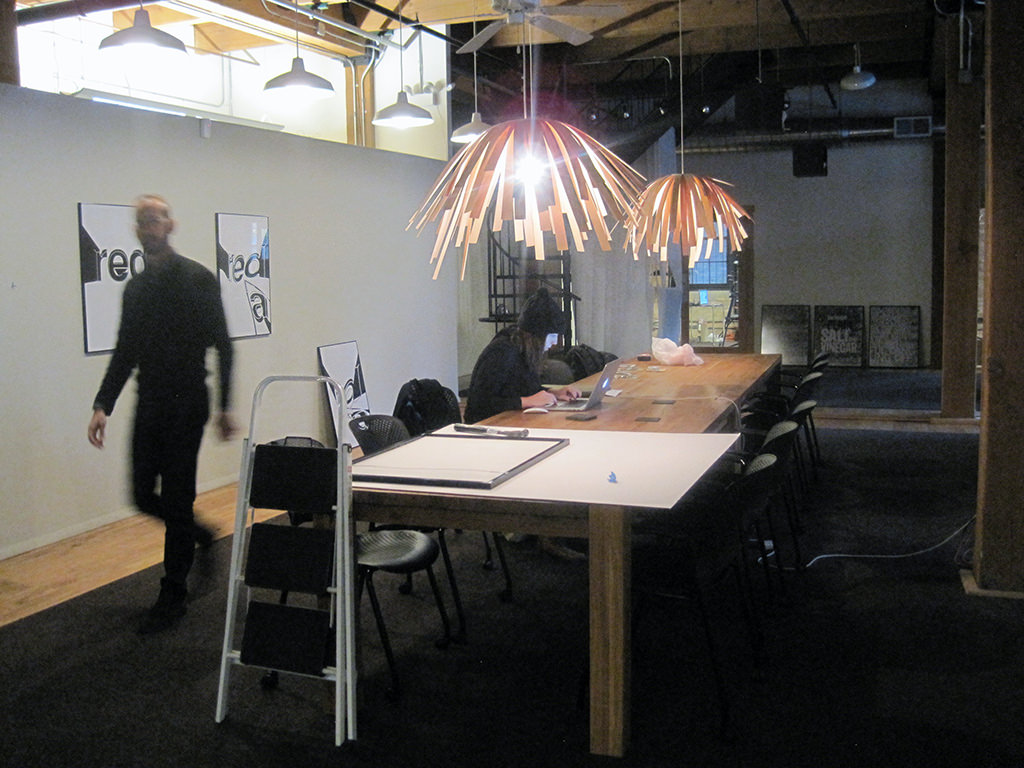A new research report explores the past, present, and future of the workplace and reveals how organizations are using new strategies to improve the productivity and success of employees.
The International Facility Management Association (IFMA) released Distributed Work Revisited: Research Report #37, which is a follow-up to its 2009 Distributed Work report. Workplace strategy and design experts HOK helped IFMA develop and analyze the survey, collect the case studies and write the report.
IFMA members from 538 different organizations worldwide—83% were from the U.S. and Canada—completed an online questionnaire about their on- and off-site workplace accommodations, operational needs, technologies, specific facilities, change management processes and measurements for success. The area occupied by participating organizations ranges from 50,000 to more than 1 million sf. Distributed Work Revisited summarizes the complete survey results and provides a detailed analysis of the findings.
The report features case studies describing innovative distributed work programs across different stages of maturity in eight organizations: Microsoft, GSK, eBay, Credit Suisse, the U.S. General Services Administration, Accenture, Rockwell Collins and the City of Calgary. Results of the study reveal some surprising details about today’s workplace. Highlights include:
• Distributed work is still a relatively new concept. Sixty-one percent of facility professionals responding to this survey reported using unassigned workspaces in their facilities. Only 18% of survey participants have had a distributed work program in place for more than 10 years and 37% for more than five years.
• One hundred percent of survey respondents who reported implementing unassigned on-site distributed work options cited work-life balance as being a “very important” reason for doing so. Other factors listed as “very important” were to accommodate changes in the organization’s size (64%), leverage new technology (62%), increased productivity (60%), align with organizational goals (59%), cost savings (57%), improved flexibility (56%) and benefits for employees (55%).
• Employee benefits are the major drivers for off-premise solutions, enabling organizations to improve flexibility and support work-life balance.
• Respondents reported that distributed work strategies appeal most to Generation X (aged 35-48) employees, possibly because they work more independently than other groups and are more likely to have family commitments that require flexibility in how and where they work.
• The most popular on-site distributed work settings among respondents are spaces that promote collaboration and innovation, including war/project rooms (72%), huddle rooms (70%) and open lounge/soft seating areas (67%).
• More organizations are providing incentives to employees adopting distributed work. Thirty-three percent of respondents reported that when they adopted a distributed work policy, they provided an incentive—typically technology such as a laptop or mobile device—to employees. This is up from 18% in 2009.
• More organizations are measuring the results of their distributed work programs. Almost one-third of the organizations engage their workforces in testing and carrying out distributed work settings. This is up from 19% in 2009.
• Despite the expressed importance of employee engagement and satisfaction in achieving successful distributed work programs stated in the interviews, only 45% of the respondents mentioned use of change management processes.
The complete version of Distributed Work Revisited: Research Report #37 is available for sale on IFMA’s website. Funds raised support ongoing and future research.
Related Stories
Adaptive Reuse | Nov 1, 2023
Biden Administration reveals plan to spur more office-to-residential conversions
The Biden Administration recently announced plans to encourage more office buildings to be converted to residential use. The plan includes using federal money to lend to developers for conversion projects and selling government property that is suitable for conversions.
Office Buildings | Oct 30, 2023
Find Your 30: Creating a unique sense of place in the workplace while emphasizing brand identity
Finding Your 30 gives each office a sense of autonomy, and it allows for bigger and broader concepts that emphasize distinctive cultural, historic or other similar attributes.
Biophilic Design | Oct 29, 2023
Natural wood floors create biophilic experience in Austrian headquarters office
100% environmentally friendly natural wood floors from mafi add to the biophilic setting of a beverage company office in Upper Austria.
Government Buildings | Oct 27, 2023
A spurt in public spending bolsters AEC firms' government building practices
Nonresidential public construction spending, while only about a quarter of private-sector spending, has been growing at a much faster clip lately. In June, it was up 13.8% to $411.4 billion, with commercial and manufacturing the biggest subsectors, according to Commerce Department estimates.
Office Buildings | Oct 19, 2023
Proportion of workforce based at home drops to lowest level since pandemic began
The proportion of the U.S. workforce working remotely has dropped considerably since the start of the Covid 19 pandemic, but office vacancy rates continue to rise. Fewer than 26% of households have someone who worked remotely at least one day a week, down sharply from 39% in early 2021, according to the latest Census Bureau Household Pulse Surveys.
Biophilic Design | Oct 18, 2023
6 ways to integrate nature into the workplace
Integrating nature into the workplace is critical to the well-being of employees, teams and organizations. Yet despite its many benefits, incorporating nature in the built environment remains a challenge.
Office Buildings | Oct 16, 2023
The impact of office-to-residential conversion on downtown areas
Gensler's Duanne Render looks at the incentives that could bring more office-to-residential conversions to life.
Government Buildings | Oct 10, 2023
GSA names Elliot Doomes Public Buildings Service Commissioner
The U.S. General Services Administration (GSA) announced that the agency’s Public Buildings Service Commissioner Nina Albert will depart on Oct. 13 and that Elliot Doomes will succeed her.
Products and Materials | Sep 29, 2023
Top building products for September 2023
BD+C Editors break down 15 of the top building products this month, from smart light switches to glass wall systems.
Office Buildings | Sep 28, 2023
Structural engineering solutions for office-to-residential conversion
IMEG's Edwin Dean, Joe Gulden, and Doug Sweeney, share seven key focuses for structural engineers when planning office-to-residential conversions.

















